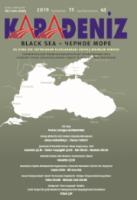GEÇİŞ DÖNEMİ KIRGIZ YAZARI OSMANAALI SIDIKOV’UN ESERLERİNDE ÇAĞDAŞ TÜRK LEHÇELERİNİN İZLERİ
FOOTPRINTS OF MODERN TURKIC DIALECTS IN THE WORKS OF KYRGYZ WRITER OF TRANSITIONAL PERIOD: OSMONAALY SYDYKOV
Author(s): Meder SalievSubject(s): Phonetics / Phonology, Comparative Linguistics, Sociolinguistics, Turkic languages
Published by: Kültür Ajans Tanıtım ve Organizasyon
Keywords: Cagatay language; Modern Kyrgyz written language; modern Turkic dialects; sounds;
Summary/Abstract: The transition periods are often marked with Grand changes in the lifetimes and with the levels with which these changes permeate different levels of society. Early XXth century is such a period for the Turkic world. The Cagatay language, which was one of two literary Turkic languages, has lost its influence, where as many spoken languages of Turkestan were becoming literary. It is possible to compare and analyze the modern day Turkic dialects of Turkestan, and trace the differences between them to the socio-political transformations of their carriers in the beginning of the XXth century. Although the Soviet records indicate that the Kyrgyz language has started to be literary starting from 1924, when the first newspaper in Kyrgyz “Erkin Too” starts its life, history tells us that even before the Soviet reformations, there used to be mullahs which would write and document the folklore and spoken history. These writers would write their works in Cagatay language using Arabic alphabet. In this article, we analyze Kyrgyz grammar in the works of a first Kyrgyz history writer Osmonaaly Sydykov. He wrote his books “Muhtasar Tarih-i Kırgıziya”, “Tarih-i Kırgız Şadmaniya” in the city of Ufa. Despite the claims of the author regarding the usage of pure Kyrgyz in the books, it is possible to trace the influence of the Cagatay language in it. We compare the grammar of the book with contemporary grammar of Kyrgyz language. We then analyze, which of those properties are in active use in the modern Turkic languages.
Journal: Karadeniz Uluslararası Bilimsel Dergi
- Issue Year: 2019
- Issue No: 43
- Page Range: 153-160
- Page Count: 8
- Language: Turkish

